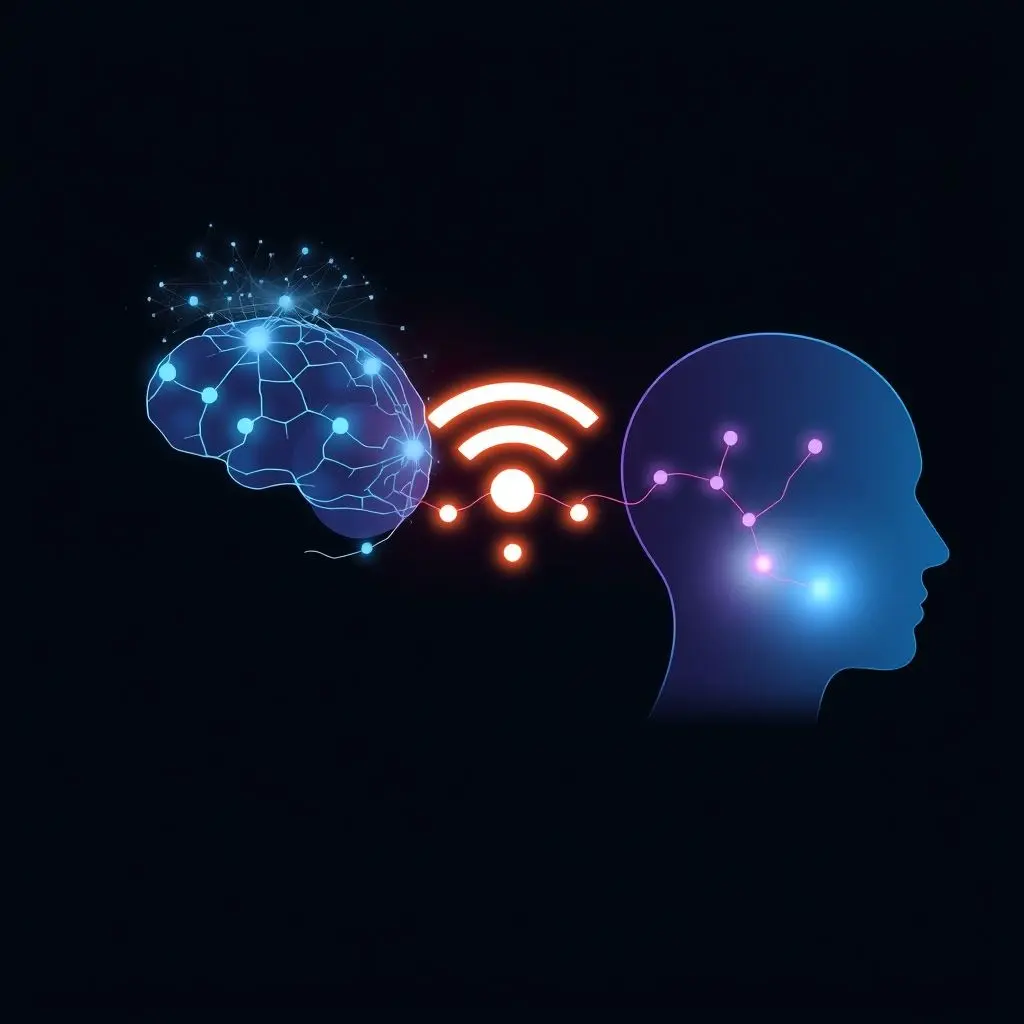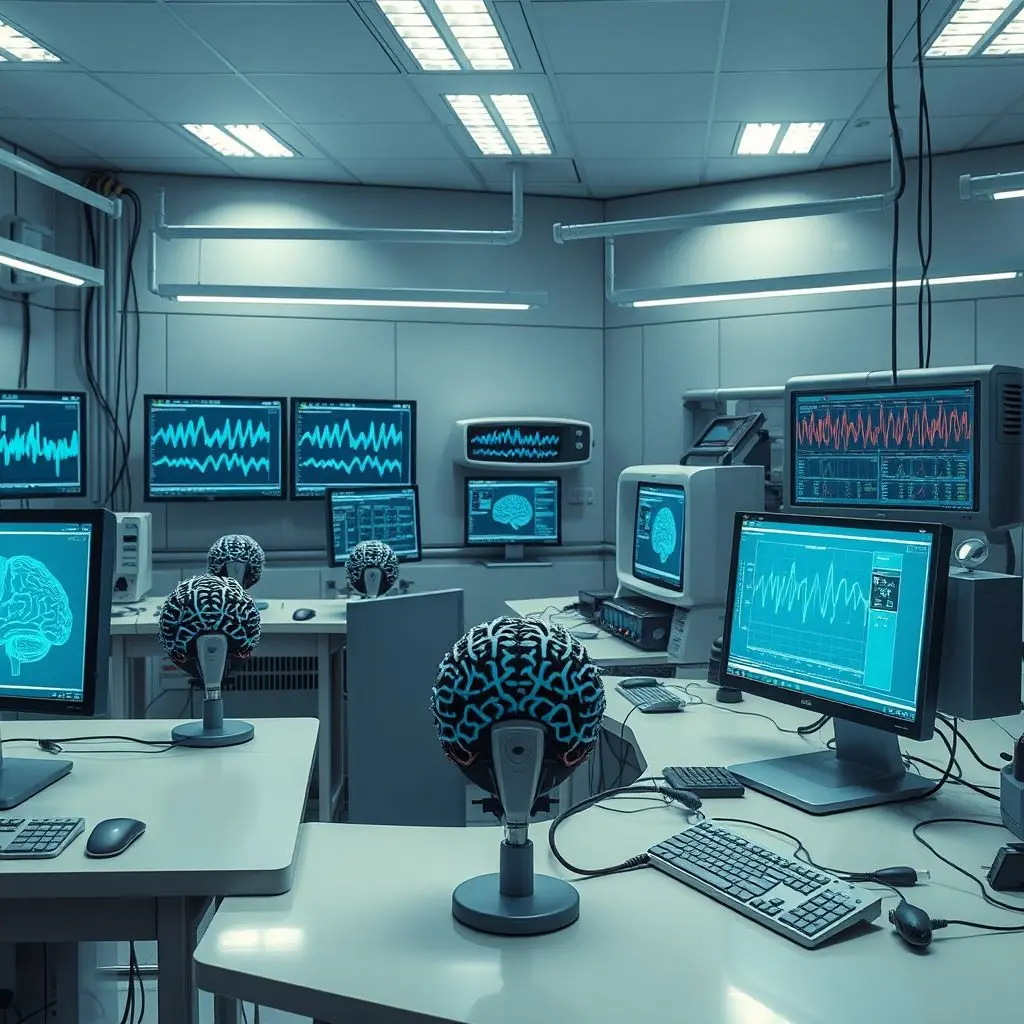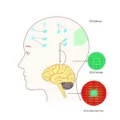Imagine a world where thoughts, ideas, and even simple actions aren’t limited by the clumsy mechanics of spoken words or typed text. What if your brain could simply talk directly to someone else’s? This isn’t merely the stuff of science fiction flicks anymore. We’re standing on the precipice of a truly revolutionary frontier: brain-to-brain communication.
Researchers globally are actively developing technologies that create interfaces allowing signals from one person’s brain to be transmitted, received, and even *understood* by another’s. This paves the way for non-verbal communication of everything from basic commands to complex perceptions. Think about sharing insights instantly, or perhaps learning intricate skills just by linking minds. The potential for profound understanding and human connection is genuinely staggering.
As the saying goes, ‘When minds connect, words become obsolete.’ If your brain just processed how mind-blowingly amazing that sounds, you’re already getting a taste of the concept. Speaking of which, sometimes a quick visual sums it up better than words. We put together a short clip to capture the essence of this idea:
Table of Contents
Beyond Sci-Fi: What Are Brain-to-Brain Interfaces (BBI)?
Brain-to-Brain Interfaces (BBIs), sometimes referred to as Brain-Net or direct neural interfaces between individuals, represent a groundbreaking area of neuroscience and engineering. At its core, BBI technology aims to establish a direct communication pathway between the brains of two or more individuals, bypassing traditional sensory and motor systems.
Unlike Brain-Computer Interfaces (BCIs) that connect a brain to a machine, BBIs connect one brain to another, often with the assistance of intermediary computer systems. This direct link holds the promise of enabling forms of communication and collaboration previously confined to telepathic fantasies.

How is This Even Possible? The Mechanics Explained
Achieving brain-to-brain communication involves several complex steps, typically requiring a combination of technologies:
Signal Detection from the ‘Sender’ Brain: This is the first crucial step. Researchers need to read the electrical or metabolic activity in the brain of the person initiating the communication. Common non-invasive methods include:
- Electroencephalography (EEG): This technology uses electrodes placed on the scalp to measure electrical activity resulting from neuronal firing. It’s excellent for detecting rapid changes in brain states, like those associated with specific thoughts or intentions (e.g., deciding to move a hand or acknowledging a stimulus).
- Functional Magnetic Resonance Imaging (fMRI): This technique measures brain activity by detecting changes in blood flow. While more precise spatially than EEG, it’s slower and typically requires the subject to be in a large, expensive scanner. It’s less common for real-time BBI transmission but useful for initial research or specific types of signals.
Invasive methods, using electrodes implanted directly into the brain, can provide much higher resolution signals but come with significant risks and ethical considerations, limiting their use primarily to medical applications (like controlling prosthetics) rather than general BBI.
Signal Encoding and Transmission: The detected brain signals are raw and complex. They need to be processed, interpreted by a computer algorithm, and encoded into a transmittable format. This might involve converting a specific brain pattern (like thinking “yes”) into a simple binary signal (like a ‘1’). This encoded signal is then transmitted electronically, usually over the internet or a wireless network, to the receiver’s location.
Signal Reception and Stimulation of the ‘Receiver’ Brain: This is perhaps the most futuristic part. The incoming signal is received by a system connected to the second person. Instead of being displayed on a screen, the signal is used to *stimulate* the receiver’s brain, ideally in a way that they perceive the intended information.
- Transcranial Magnetic Stimulation (TMS): This non-invasive technique uses magnetic pulses delivered through the scalp to stimulate specific areas of the brain. TMS can induce activity in the motor cortex (causing a twitch) or the visual cortex (causing flashes of light, called phosphenes). This is a common method used in early BBI experiments to transmit simple instructions or sensory data.
- Transcranial Direct Current Stimulation (TDCS): This method uses weak electrical currents applied through electrodes on the scalp to modulate neuronal activity. It’s generally used to increase or decrease activity in a brain region rather than transmit precise signals, but can play a role in preparing the brain or influencing perception based on transmitted data.
Interpretation by the Receiver: The final step is for the receiver’s brain to interpret the induced stimulation. If the stimulation was delivered correctly to the visual cortex, they might see a flash of light corresponding to a ‘bit’ of information. If delivered to the motor cortex in conjunction with a task, it might influence their action. This interpretation is currently very basic – think translating a signal into a simple perception or command, not full-fledged thought transfer.

Early Milestones and What’s Been Achieved
While still in its nascent stages, brain-to-brain communication is moving from theoretical possibility to demonstrated reality through pioneering experiments:
- Early Animal Studies: Back in the 2010s, researchers successfully demonstrated direct brain-to-brain communication between rats. One rat’s brain activity, while performing a task, was transmitted to another rat’s brain, influencing the second rat’s behavior in real-time, even across continents. Similar experiments were later conducted with monkeys.
- Human-to-Human Non-Invasive BBI: A significant milestone was reached by researchers at the University of Washington and elsewhere, demonstrating non-invasive human-to-human brain interfaces. In landmark experiments, one participant (the ‘sender’) would think about performing an action (like moving their hand in a game) or perceive information (like seeing a signal). Their brain activity was read via EEG, processed, and transmitted over the internet to another participant (the ‘receiver’). The receiver’s brain was then stimulated using TMS or TDCS, causing an involuntary action (like a finger twitch) or inducing a visual perception (like a flash of light), effectively transmitting a simple ‘bit’ of information or a command directly from one brain to another.
- More Complex Information Transfer: More recent work has aimed at transmitting slightly more complex information. Experiments have shown the ability to transmit answers to simple questions (‘yes’/’no’), identify objects based on transmitted signals, or even collaborate on basic tasks using only direct brain links.
It’s important to note that current human BBI experiments typically involve the transmission of very basic signals or commands, often requiring conscious effort from the sender and resulting in a rudimentary perception or action in the receiver. We are far from transferring complex thoughts, memories, or emotions directly.
The Revolutionary Potential
Should BBI technology continue its rapid development, the implications are nothing short of transformative:
- Enhanced Communication: Imagine bypassing language barriers and instantly sharing conceptual ideas or intentions. This could revolutionize international collaboration, diplomacy, and everyday interaction.
- Accelerated Learning: Could complex motor skills, intricate knowledge sets, or even subjective experiences be partially ‘downloaded’ or shared between minds? This could drastically change education and skill acquisition.
- Assisting Individuals with Disabilities: For those with severe communication disorders or paralysis, BBI could offer entirely new ways to interact with the world and other people.
- Collaborative Problem Solving: Teams could potentially synchronize their thought processes or share insights at an unprecedented speed and depth, leading to faster breakthroughs in science, engineering, and other fields.
- Immersive Entertainment and VR: Future gaming or virtual reality experiences could incorporate direct brain-to-brain links, allowing for shared sensory perceptions or collaborative actions within virtual environments.

Navigating the Ethical Maze and Technical Hurdles
Like any powerful technology, BBI raises profound ethical questions and faces significant technical challenges:
Ethical Considerations:
- Mental Privacy: If our brains can communicate directly, how do we protect our innermost thoughts and feelings from being accessed or transmitted without consent?
- Identity and Autonomy: Could external signals or even other people’s thoughts influence our own decisions or sense of self? How do we ensure autonomy?
- Security and Misuse: What are the risks of malicious hacking, unauthorized access, or using BBI for coercive purposes?
- Equality and Access: Will this technology be available to everyone, or will it create a new digital (or neural) divide?
Technical Challenges:
- Signal Resolution and Noise: Brain signals are incredibly complex and noisy. Accurately detecting, interpreting, and encoding meaningful information is difficult.
- Stimulation Precision: Current non-invasive stimulation methods like TMS and TDCS are relatively crude and affect broad areas. Precisely targeting specific neurons or neural circuits to convey nuanced information is a major challenge.
- Bandwidth and Speed: Transferring the sheer volume of information contained in thoughts and perceptions in real-time requires immense bandwidth and processing power. Current systems are very low-bandwidth.
- Understanding Brain Code: We still have a limited understanding of how the brain encodes complex information like concepts, emotions, and memories. Without this understanding, translating these into transmittable signals is impossible.
- Safety and Long-term Effects: Ensuring the safety of stimulation methods and understanding any potential long-term neurological effects is paramount.

FAQs About Brain-to-Brain Communication
Here are some common questions people have about BBI:
Q: Is this true telepathy? Can I read someone’s mind?
A: Not in the way telepathy is usually depicted in fiction. Current BBI allows for the transmission of very basic information or commands (like a binary choice or a simple motor signal). It does not allow you to ‘read’ complex thoughts, private memories, or emotions. It’s more like sending a very rudimentary signal than accessing the full stream of consciousness.
Q: How far can these brain signals travel?
A: The brain signals themselves don’t travel directly through the air over long distances. The signal detected from the sender’s brain is encoded into an electronic signal (like data packets) and transmitted via standard communication infrastructure, such as the internet. So, theoretically, the ‘distance’ can be global, limited only by the network infrastructure, but the direct brain interaction is mediated by technology at both ends.
Q: Is it safe?
A: Current non-invasive methods like TMS and TDCS, when used responsibly in research settings according to safety protocols, are generally considered safe for participants. However, like any technology interacting directly with the brain, ongoing research is crucial to fully understand any potential long-term effects, especially as systems become more complex. Any invasive BBI would carry surgical risks as well.
Q: Can I use BBI to learn a new language or skill instantly?
A: We are nowhere near that capability yet. Learning complex skills involves intricate neural pathways and processes that cannot currently be transmitted or induced directly via BBI. While some research hints at the possibility of influencing learning, instant skill transfer remains firmly in the realm of science fiction for now.
Q: Who is doing this research?
A: Leading neuroscience and engineering labs at universities and research institutions worldwide are exploring BBI, including institutions like the University of Washington, Harvard, Duke, and various European and Asian research centers.
Looking Towards the Horizon
The journey towards sophisticated brain-to-brain communication is long and filled with formidable challenges. Yet, the progress made in just the last decade is astonishing. As our understanding of the brain deepens and our neurotechnology becomes more refined, the bandwidth of BBI is likely to increase, enabling the transmission of more complex forms of information. We might see applications emerge first in specialized fields like assisting individuals with severe disabilities or enhancing very specific forms of collaboration.
Ultimately, the prospect of directly linking minds challenges our fundamental understanding of communication, consciousness, and connection. It opens up possibilities that are both exhilarating and daunting. The path ahead requires careful ethical consideration alongside relentless scientific innovation.
The future, where minds connect directly, is rapidly approaching. Don’t want to miss witnessing this unfold? Perhaps your finger could process the ‘like’ button on that shorts video, and hitting subscribe will ensure you’re here as the future arrives.





